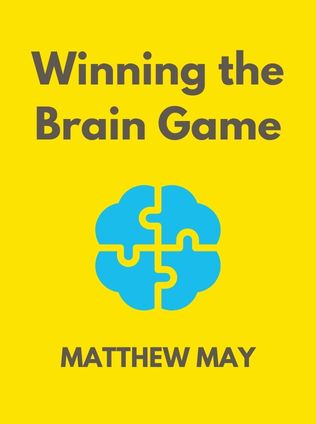
Winning the Brain Game
Fixing the 7 Fatal Flaws of Thinking
By Matthew May
Published 05/2016
About the Author
Matthew E. May is a prominent figure in the fields of strategy, innovation, and business development. With a rich background that includes serving as a creative advisor to Toyota for eight years, May has gained a reputation for his expertise in guiding companies towards innovative practices and strategic excellence. His work has been recognized internationally, and he is a sought-after speaker, facilitator, and coach. May has authored five influential books and writes the "Brain Game" column for Inc. magazine, where he shares insights on creative problem-solving and strategic thinking. His contributions to the business world emphasize the importance of mindful thinking and the development of creative solutions to complex problems.
Main Idea
In "Winning the Brain Game: Fixing the 7 Fatal Flaws of Thinking," Matthew E. May explores the cognitive biases and flawed thinking patterns that hinder effective problem-solving and innovation. The book identifies seven pervasive thinking flaws—Leaping, Fixation, Overthinking, Satisficing, Downgrading, Not Invented Here (NIH), and Self-Censoring—that often lead to suboptimal solutions and stifle creativity. May argues that these flaws are deeply ingrained in our thinking processes, leading to repeated mistakes and missed opportunities. Through a blend of neuroscience, psychology, and practical insights from successful thinkers, the book offers strategies, or "fixes," for each flaw. These fixes are designed to enhance decision-making, foster creativity, and enable individuals and organizations to achieve greater success in various aspects of life.
Table of Contents
- Introduction: The 7 Fatal Flaws of Thinking
- Leaping
- Fixation
- Overthinking
- Satisficing
- Downgrading
- Not Invented Here (NIH)
- Self-Censoring
- Conclusion: The Path to Mindful Thinking
Analyzing the 7 Fatal Flaws and Their Fixes
1. Leaping
Leaping is a cognitive flaw where individuals quickly jump to conclusions or solutions without fully understanding the problem. This often occurs due to reliance on fast, intuitive thinking, also known as System 1 thinking, as described by Daniel Kahneman. While this type of thinking is efficient for everyday decisions, it can lead to errors when dealing with complex or unfamiliar challenges. Leaping is characterized by a hasty approach that prioritizes speed over accuracy, often resulting in misjudgments and missed opportunities for deeper analysis.
The Fix: Framestorming combines framing and brainstorming to slow down the thought process and encourage a more comprehensive exploration of the problem. This technique involves reframing problems as questions, which helps prevent premature conclusions and encourages a deeper understanding of the underlying issues. For example, instead of asking, "How can we cut costs?" a more exploratory question might be, "What are the hidden costs that we have not yet identified?" By shifting the focus from immediate solutions to a broader inquiry, framestorming allows for the discovery of more innovative and effective solutions.
“The secret lies in how to trigger SLOW so that it acts and feels like FAST.” - Matthew E. May
2. Fixation
Fixation refers to a mental rigidity where individuals become overly attached to a particular idea, method, or solution, often due to past successes or ingrained habits. This flaw can manifest in various forms, such as functional fixedness, where people struggle to see beyond traditional uses of objects or approaches. Fixation limits creativity and problem-solving by preventing individuals from considering alternative perspectives or solutions. It often leads to a narrow focus that overlooks innovative opportunities.
The Fix: Inversion involves deliberately challenging and flipping conventional thinking to view a problem from a new and unique perspective. This approach, also known as "Opposite World," encourages individuals to list the defining attributes of a problem and then imagine the extreme opposite. For instance, consider the example of a traditional bookstore that relies heavily on physical sales; an inverted approach might envision an entirely digital platform with no physical stores, focusing on e-books and online communities. This method helps break free from established patterns and can lead to groundbreaking innovations.
Inversion:
Sign up for FREE and get access to 1,400+ books summaries.
You May Also Like
The Subtle Art of Not Giving a F*ck
A Counterintuitive Approach to Living a Good Life
By Mark MansonRich Dad Poor Dad
What the Rich Teach Their Kids About Money - That the Poor and Middle Class Do Not!
By Robert T. KiyosakiHow To Win Friends and Influence People
The All-Time Classic Manual Of People Skills
By Dale CarnegieFreakonomics
A Rogue Economist Explores the Hidden Side of Everything
By Steven D. Levitt and Stephen J. Dubner



















